When did you first discover the joy of textiles? When were you first drawn to the colours, the patterns, the possibilities; the excitement of turning material into art?
Perhaps you first picked up a needle years ago, and you loved what you could do with it. But then life happened, and maybe it’s been a struggle to find the creative momentum to keep on stitching, to keep progressing.
And if you feel that it’s time to reconnect properly with that joy of making, where (or how) do you start? If you’ve ever felt the frustrations of starting again after a long (or even short!) break, you’re not alone. Sue Stone, celebrated UK textile artist, found herself in exactly this position.
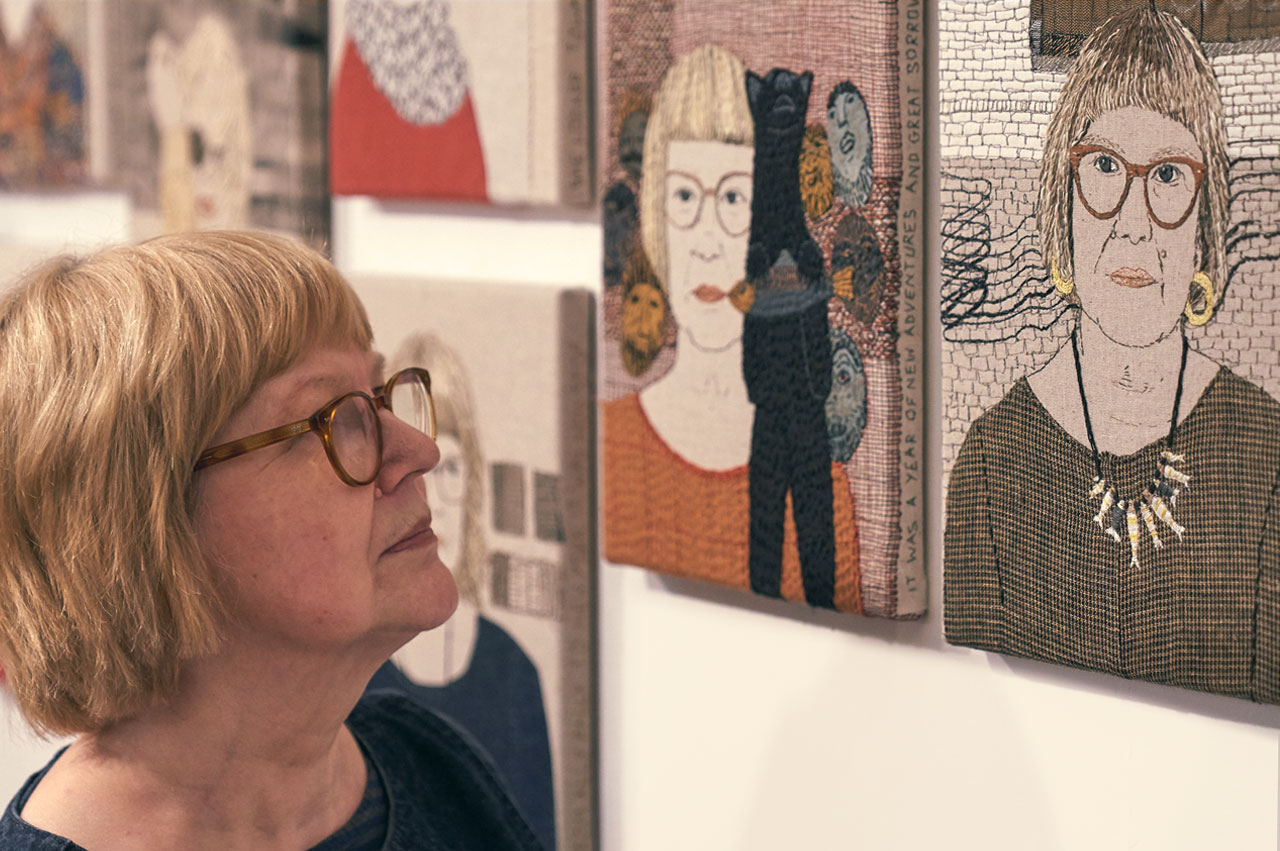
When life gets hard
Seventeen years ago, Sue had hit a hard place. She was smack in the middle of one of those times when life decides to throw everything at you at once, to see what you’re made of.
Sue had lost both her beloved dad and her brother-in-law within a few months of each other. Then, soon after, both her parents-in-law. And then her livelihood, the retail fashion business that she’d run with her husband Dave for three decades, had to close. High streets were changing. Sue knew she had to change, too.
It was a defining moment for her – one of those times that you have to strip away what doesn’t matter and identify exactly what’s important. Sue had a lot of thinking to do. She cast her mind back to when things seemed easier. She thought of the excitement of her textiles degree at the prestigious Goldsmiths University in London, where she had two years of discovery: experimenting, creating, making.
So Sue made a change. To let some light back in, she decided to reconnect with something that had brought her so much freedom and joy.
Sue started to stitch.
But Sue wasn’t in college anymore. She had no syllabus telling her what to do. She flailed about, with a hopeful hit-and-miss approach that ultimately disappointed her. She flitted from technique to technique, without feeling she’d made much progress at all. Sometimes she went weeks without touching her needle: other times she’d feverishly attack a piece, and be dissatisfied with the result.
Sue had picked up her creative compass, but she couldn’t read it. She had no clarity, no direction, no goal.
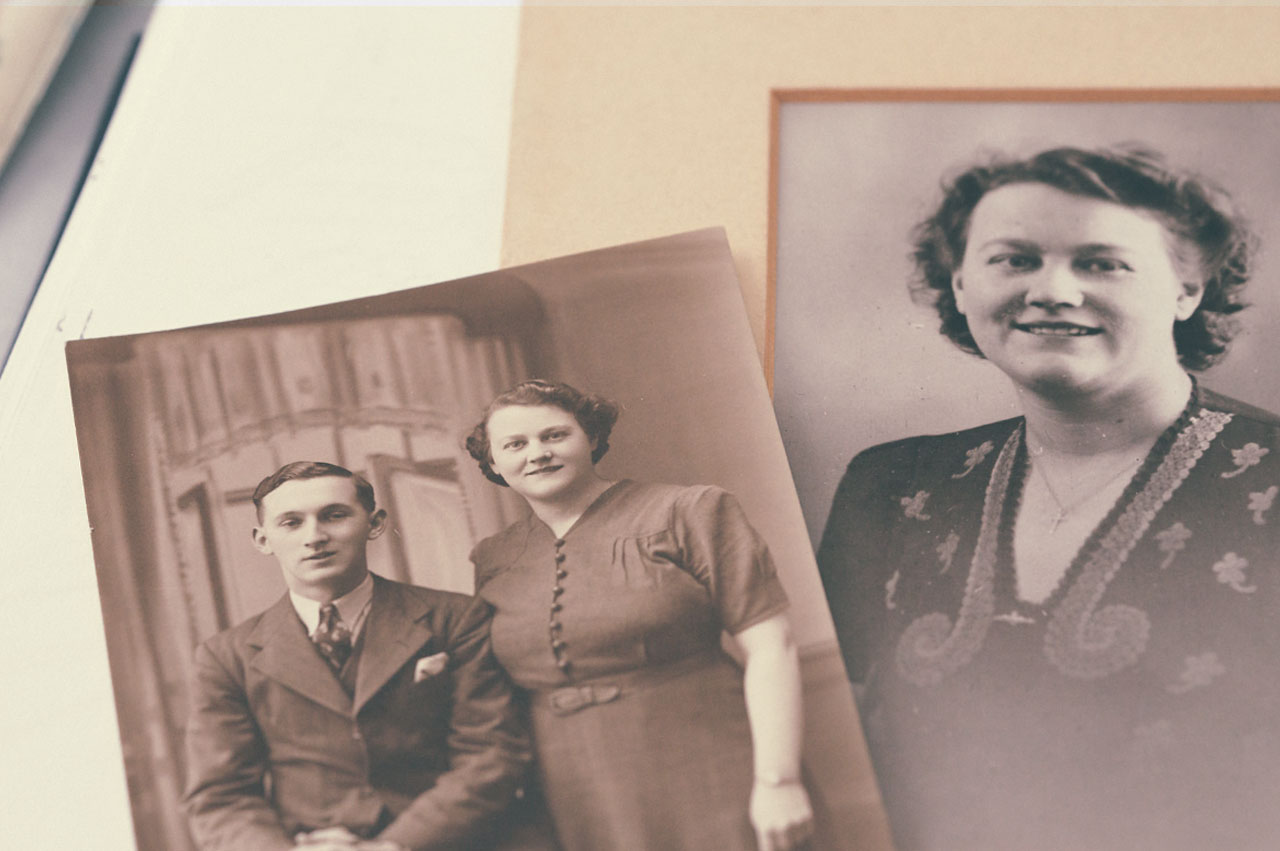
Finding meaning in loss
Her recent losses made Sue turn to her family photos. When life is hard, looking at happier times can be a comfort. She smiled at the memories of lost times and people, and of the people still in her life. “This is what’s really important,” thought Sue. “My family, my history, our story.”
She looked at the images of newborns and proud parents, family days out at the beach, toddlers starting to walk, and the weddings. So many weddings – of cousins and sons and friends.
But she didn’t look at the photos from her own wedding day.
Because she couldn’t.
She didn’t have any.
Imagine if you didn’t have that one photo. Imagine not having a visual record of that one special day, when two families get together to celebrate the start of your married life.
For Sue Stone, this was a reality.
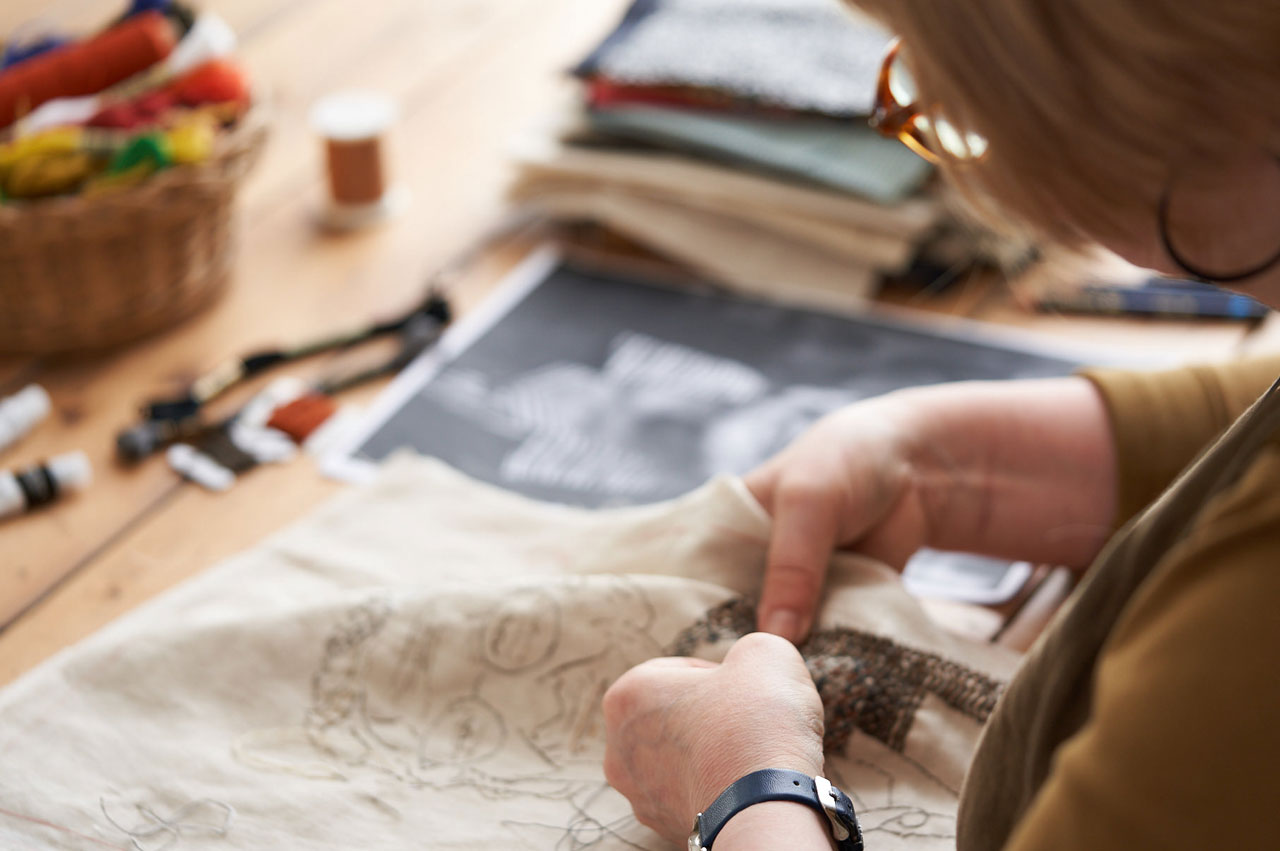
When memories are all you have
Her special day was back in the 70s, way before smartphones and selfies. Not everybody had a camera then. Her boyfriend Dave had assigned photographer duties to his best man, who had a really good one. But it was only after a four-hour train ride from London to Grimsby, Sue’s hometown, that he realised he’d forgotten it.
“Anyone got a camera?!” the cry went up. Sue’s dad did, but it was broken. “Typical Dad,” thought Sue with a smile. The ceremony started and everyone was so caught up in the celebrations that it didn’t seem to matter. And it didn’t really matter to Sue.
But, thirty years later, it did matter. As she leafed through the family albums, the absence of a wedding photo grew larger and louder. She knew she had to do something about it. She decided to make a piece of textile art to celebrate her wedding day.
She had found her inspiration.
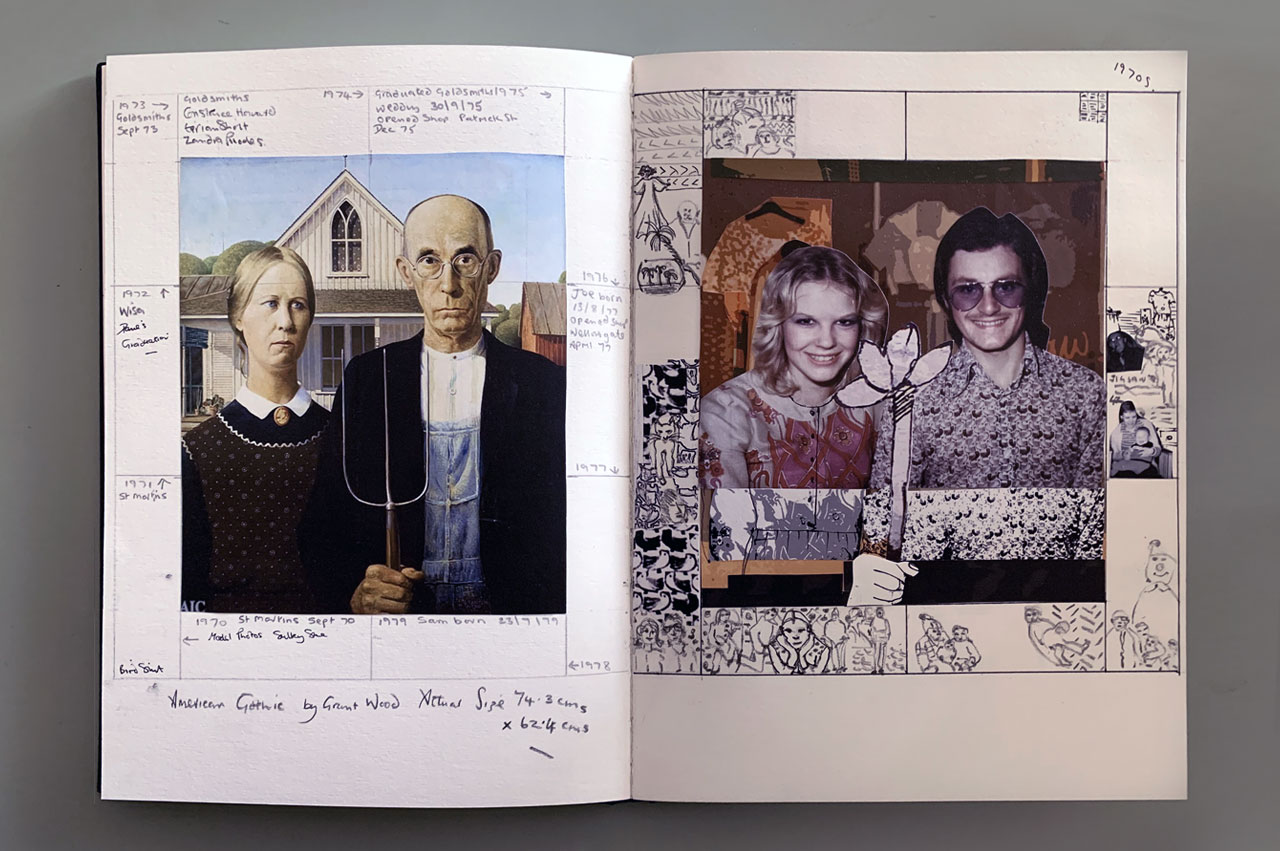
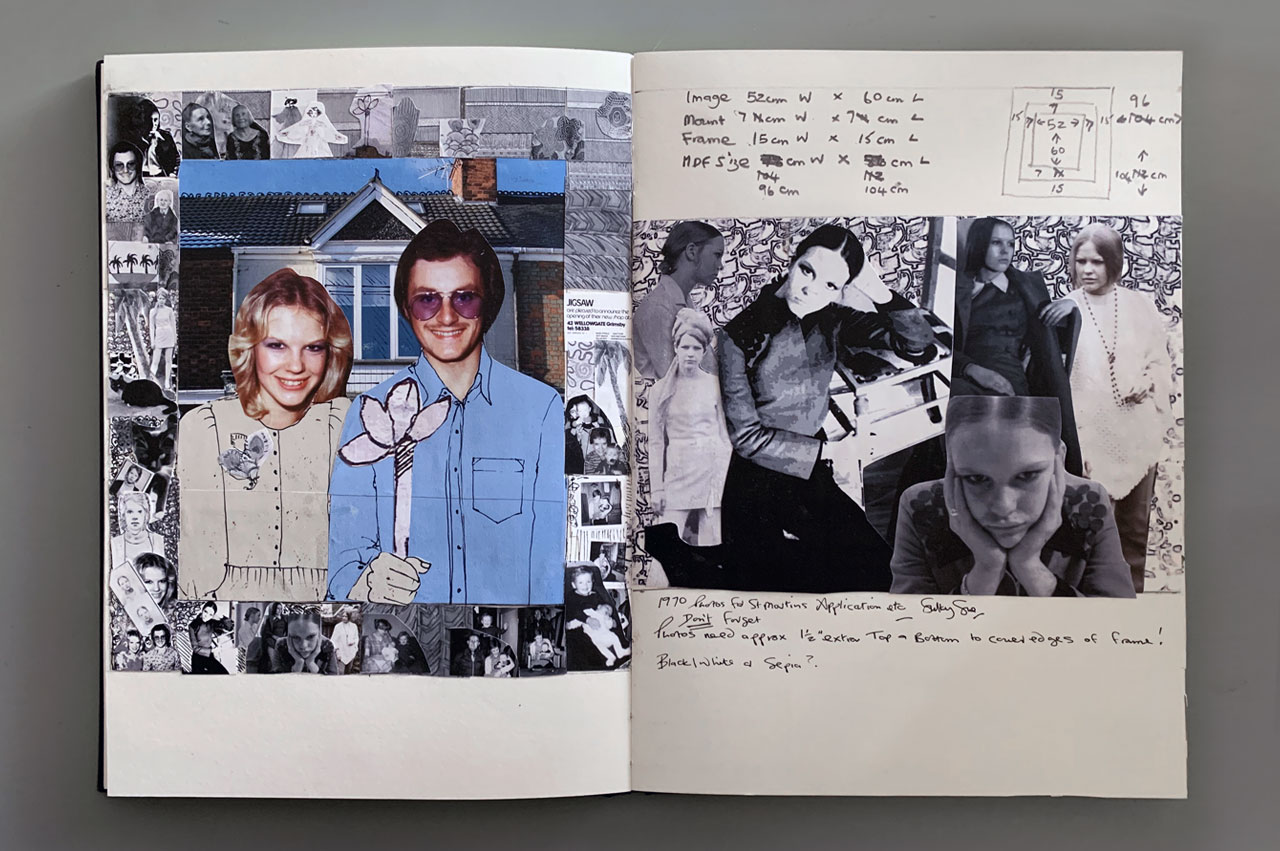
Everybody gets stuck
Inspiration is one thing. Making something you love out of it is another.
And making something for other people to love is even harder. Sue wanted to celebrate her wedding day in stitch not just for herself and her husband, but for her sons. She felt it was a high-stakes project.
Sue had no visual reference to work from. She made notes from her memories, asked her family, and looked up the fashions of the day. She did what many of us do. She over-researched, circling round the subject without actually getting started.
She knew she had to break out of it. She thought lovingly of her Goldsmiths tutor and mentor, influential textile artist Constance Howard, a small, green-haired charismatic woman who had encouraged and nurtured her all those years ago.
“What would Constance do?” thought Sue. And Constance’s voice echoed down the years to her in three words.
Keep it simple.
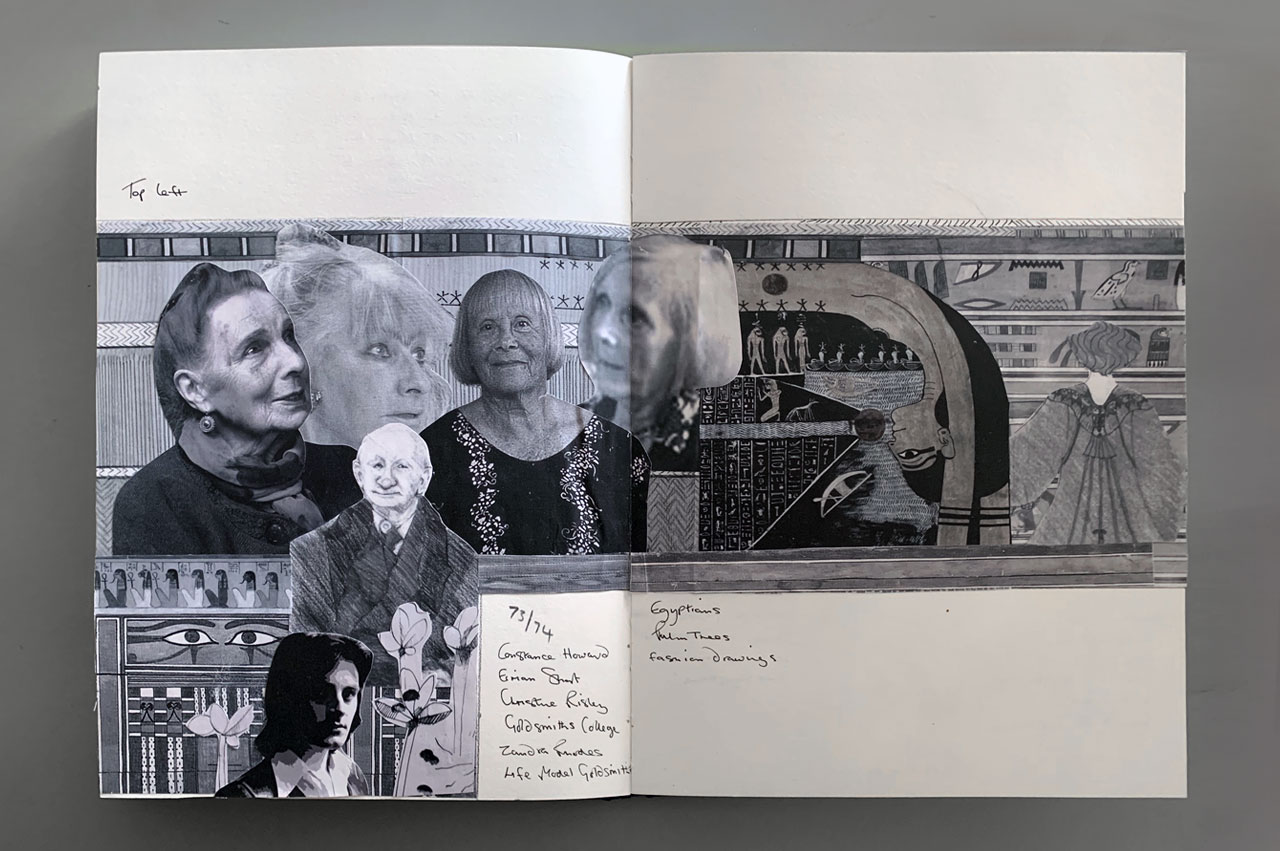
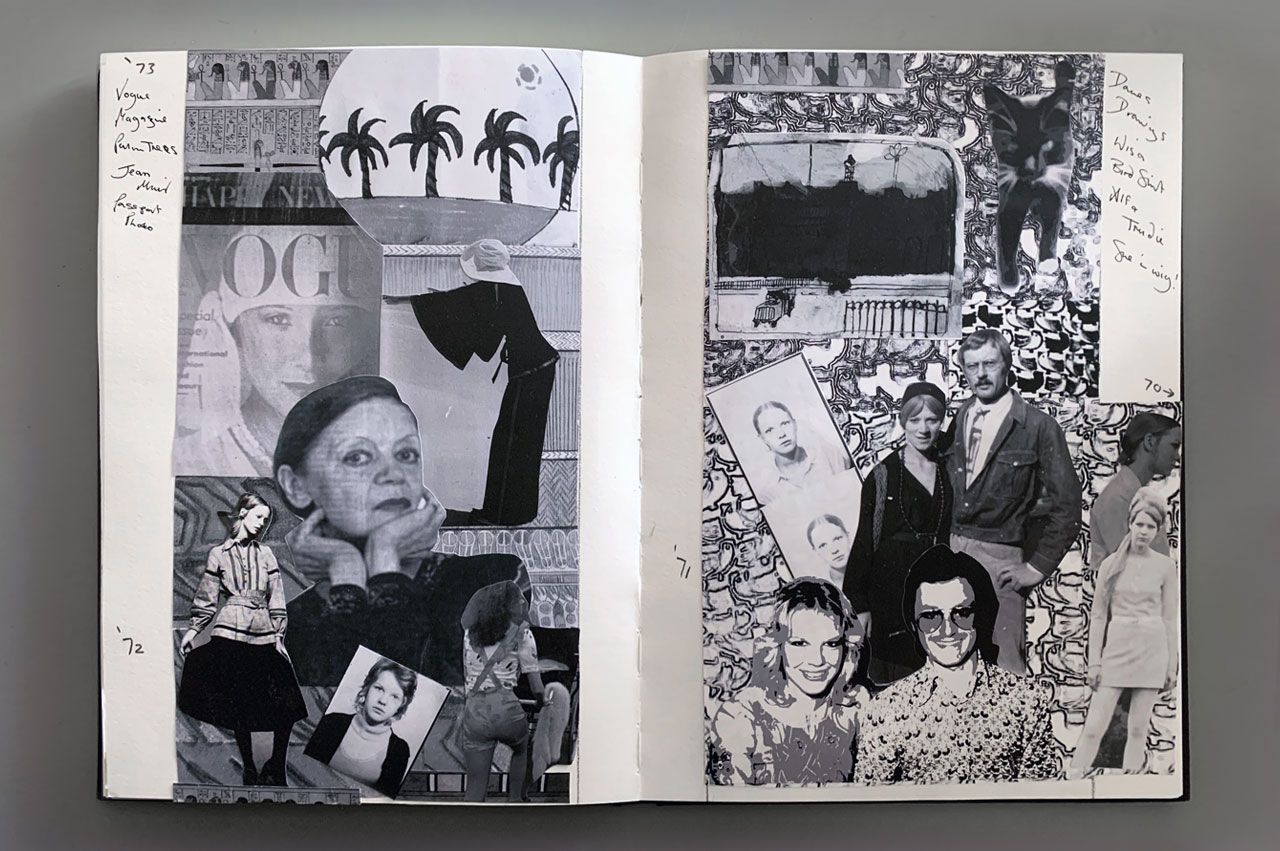
Keeping it simple
Fired up by the memory of Constance’s advice, Sue started with simplicity to tackle her first hand-stitched portraits. She dialled back her ambition to smaller pieces with simpler lines, clear shapes and clean backgrounds. She started, slowly but surely, to make progress.
Keeping it small and simple felt low-risk to Sue. It was doable. She could take little bits of time to work on little bits of stitchery. She felt that she was warming up – but also that her work was inconsistent. Some things turned out well – but she wasn’t quite sure why. On other pieces, she wasn’t happy with how eyes, mouths, faces turned out. She made things too big, too small, too weird. She cut holes, took stitches out, put them back in, took them out again. She made a complete mess of it.
She nearly gave up, but for the warm encouragement of another of her tutors, author and artist Alf Ludlam. His one word for her?
Experiment.
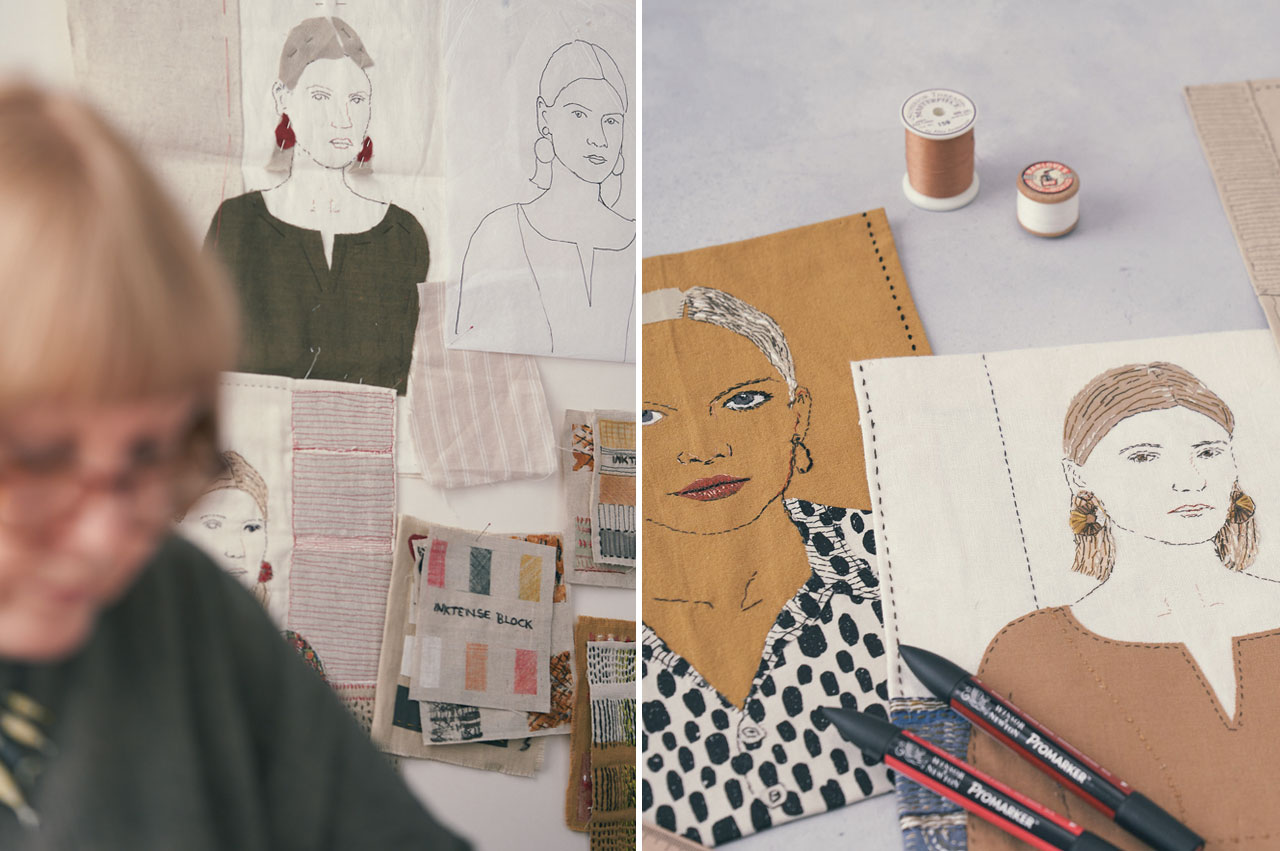
Becoming curious
Sue remembered that, back at Goldsmiths, she had been encouraged to experiment, to play, to find out. She found that the more curious she became, the less she judged herself and what she made. She asked herself “What if?” She became fascinated with her process and keen to find out why things worked – or why they didn’t.
It wasn’t easy at first, as her natural perfectionism got in her way. She started small, working on test samples, learning how to ‘audition’ pieces with each other, and trying out different combinations of techniques.
She sometimes felt confused and frustrated, but she didn’t let it derail her. She turned up at her practice whenever she could, stealing small bursts of time. She kept on with her process of staying small, experimenting, and reflecting on what was working, and what wasn’t. She learned from the things that went wrong as much as from the things that went right.
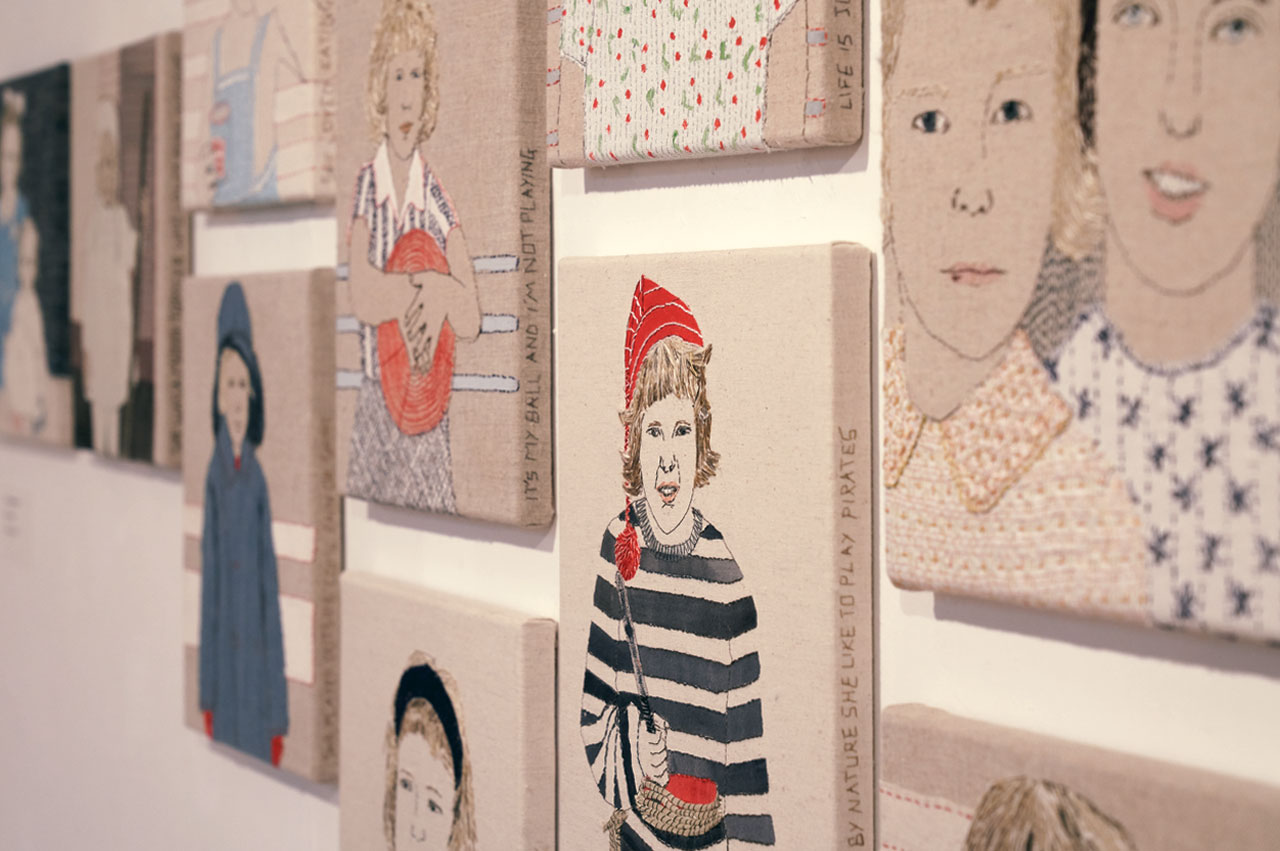
Creative building blocks
As she experimented, as she became more systematic in her approach, her knowledge grew. She used what she had learned from one sample piece in her next sample piece.
Sometimes she focussed on layering; examining how she could put together a piece like a painter might. Sometimes she investigated how she could bring an image to life just using three stitches and two colours. Other times she reduced her source image down to the simplest of lines and worked from that.
As she explored, refined and discovered, she started to build her own creative vocabulary that would become a key part of her own visual identity. She built up a body of work of more than 50 stitched pieces.
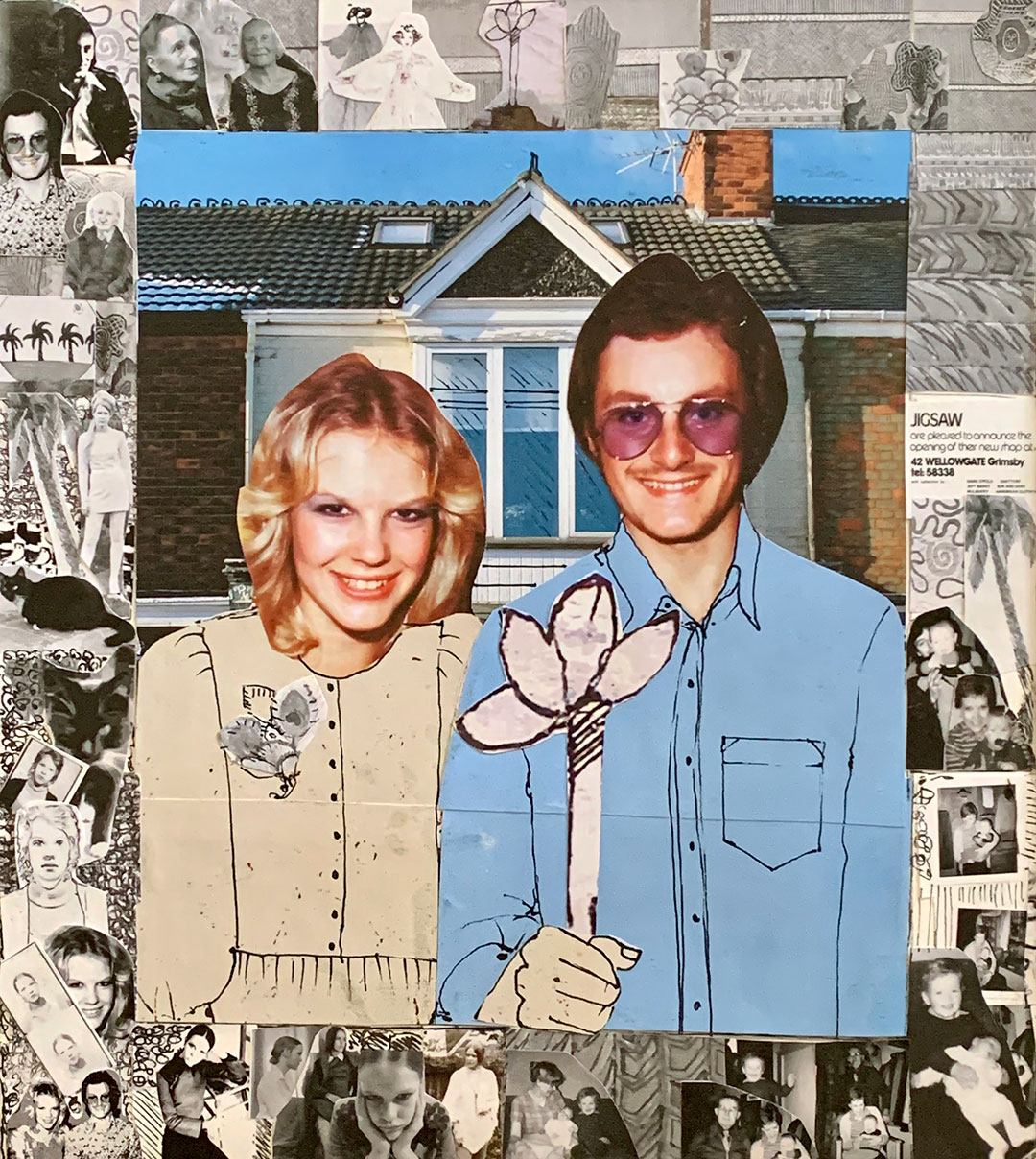
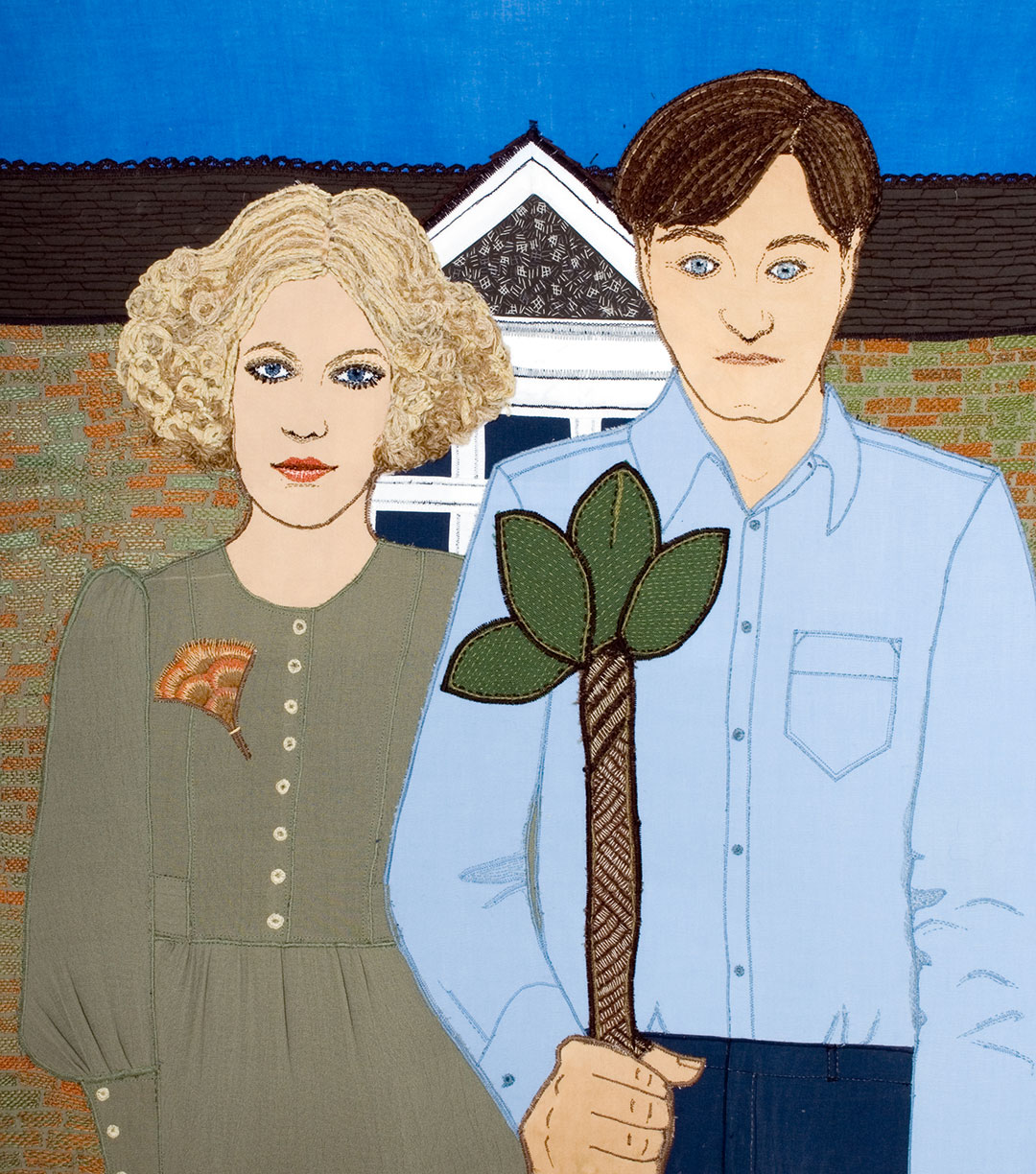
Picture-perfect doesn’t matter
Sue’s low-stakes experiments and structured approach meant that she had found her direction and her process. And, she realised, that she had developed a way of looking at portraits that gave her more artistic freedom than she dared imagine.
She realised that “picture perfect” didn’t matter.
She realised that portraits in stitch should be, for her, an artistic interpretation, rather than a literal translation of a person or an event. Her work was a way of telling her story, or of exploring her own reactions to the people and events in an image and in her own imagination. It was about capturing essence, soul and character rather than a mirror image.
As her confidence grew, so did her creative experimentation. She went bigger. She went bolder. Her portraits took shape. Her artistic voice became stronger. She felt confident enough to create larger figurative pieces.
And it was then that she got that call from Alf.
He said, “You’re exhibiting your work in November. I’ve booked the room. It’s all set. Bye!”
So, she chose her exhibition pieces, but there was a gap. She felt that it was time to create that textile piece to celebrate her wedding day. Not having a visual reference to work from didn’t faze her this time. She worked on it, steadily and confidently, using the creative vocabulary she had built up through her process and experiments.
And when she finished it, she stepped back to look at what she created.
“It’s not half bad,” she mused. “Yes. I like it. It’s done.”
But would her husband Dave like it? What would her sons, Joe and Sam, think of it?
The wedding day piece was to take centre stage of that September exhibition. Sue felt a little uneasy. To have her own expression of one of the happiest days of her life for all to see – well, she found it hard. And what would her family make of it all?
But she needn’t have worried. Her husband Dave gazed at her wedding day piece for a long time, turned to her and smiled. “Thank you. You made it for me, for us,” he said.
From being stuck creatively, Sue is now a celebrated textile artist known throughout the UK and beyond. She’s an exhibiting member of the 62 Group of Textile Artists and a Fellow of the Society of Designer Craftsmen. Her work is shown in galleries across the world.
And it’s her process that helped her discover her creative compass.
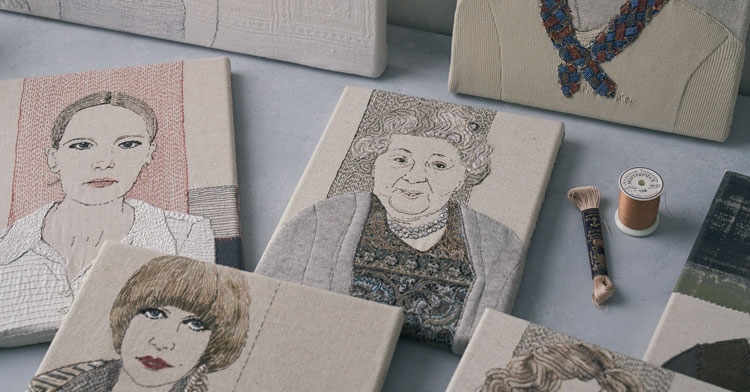
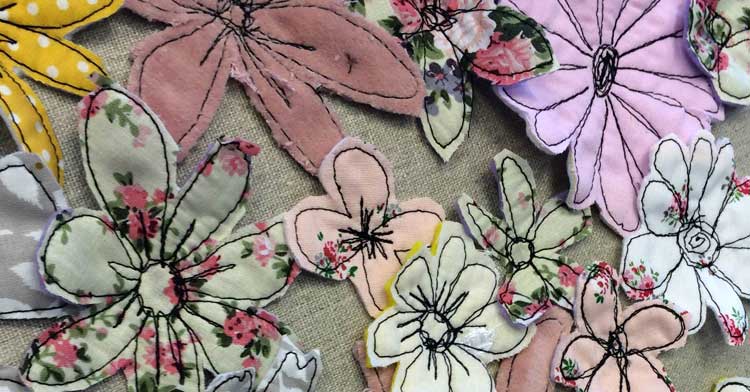
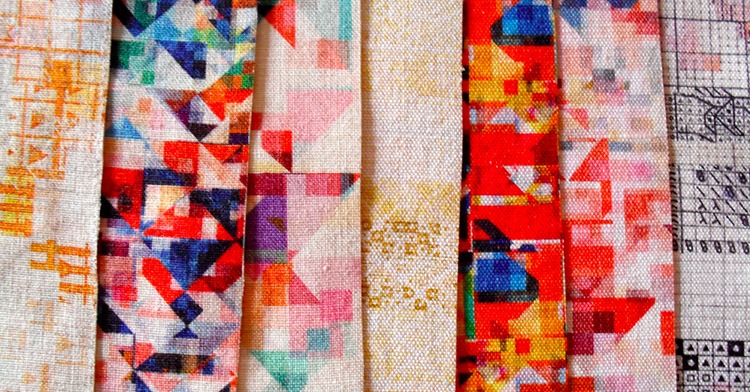
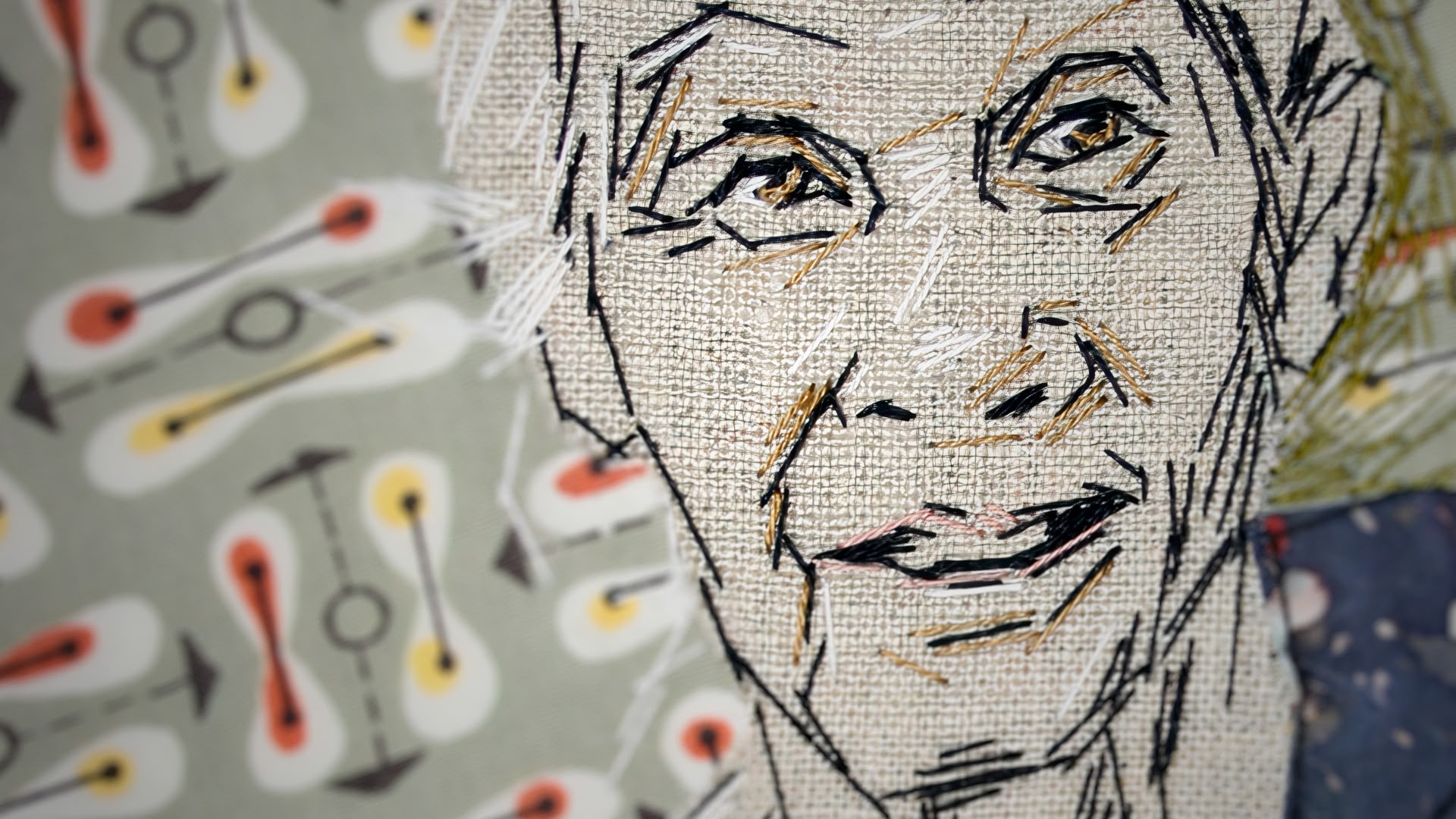
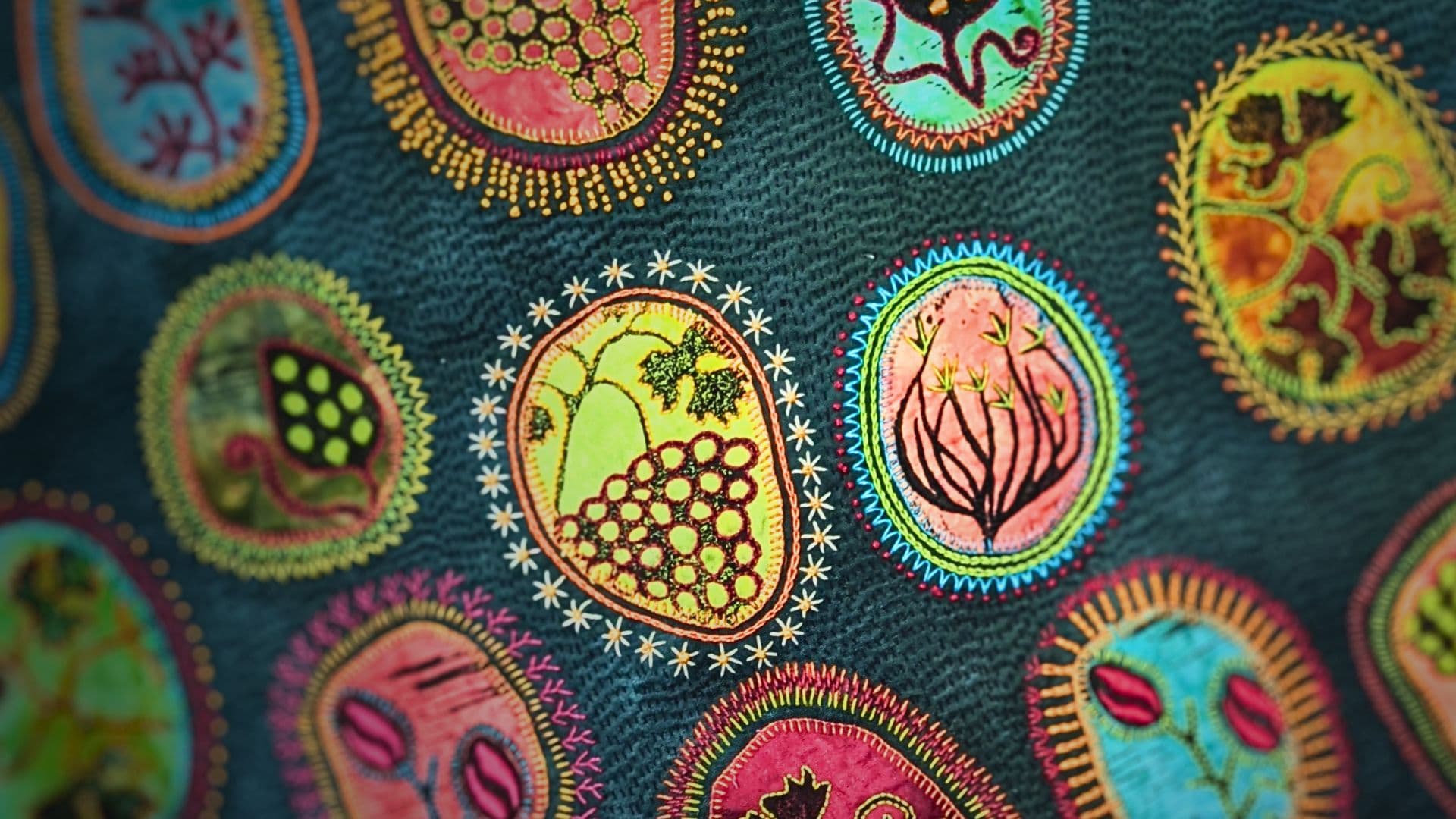
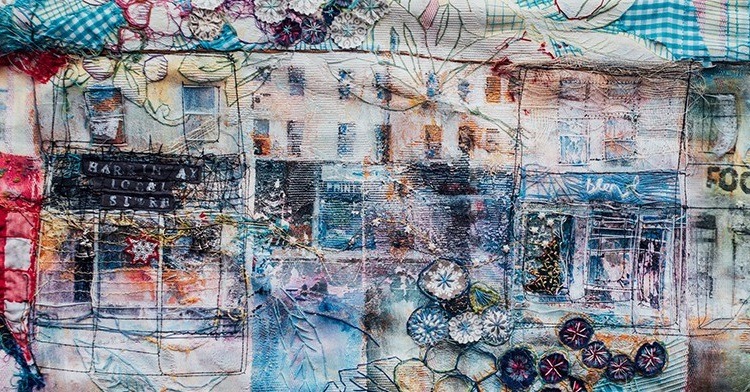
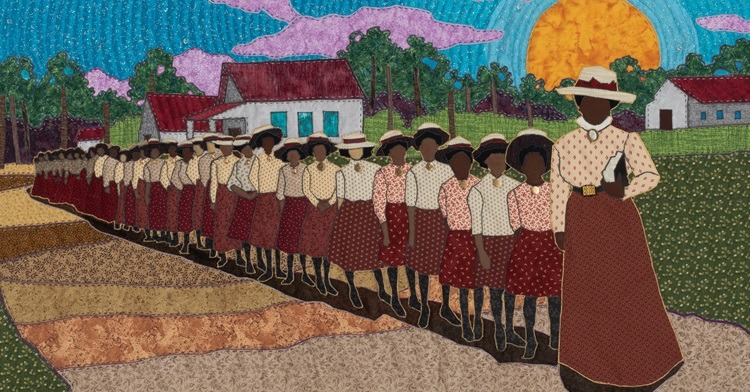
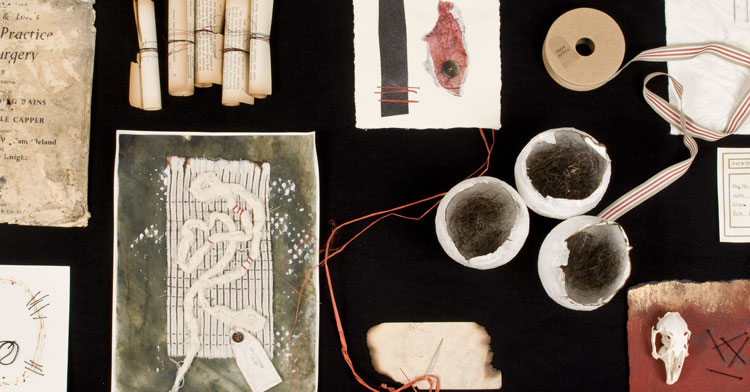
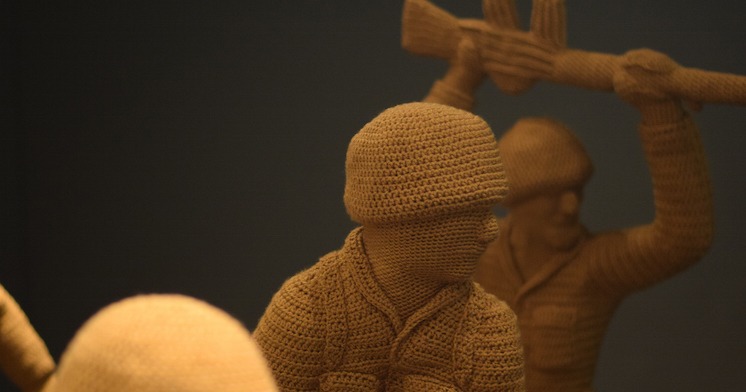
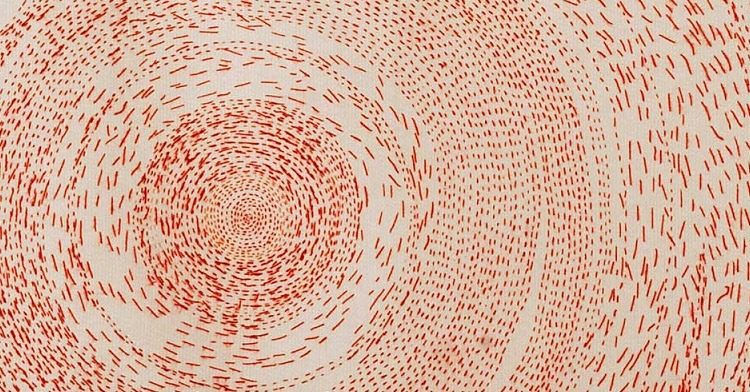
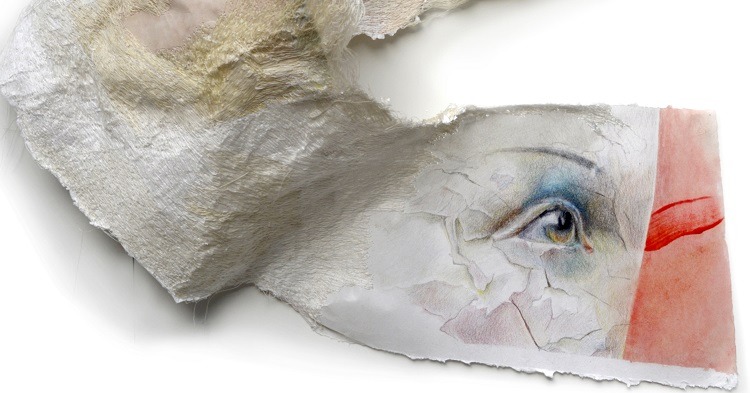
15 comments
Andrea Maria Oland
Thanks for sharing this touching story ! But when I saw the finished artwork, I said NO, bewildered, this cannot be, because the portrayed man is – Joe ! !
Today I have made a promise to Myself to use this year, 2020, to research and experience as to filling out a form or around a form with ornaments. This will be my next school-year with needle and thread.
On photo from your exhibition you seem to have wrapped linen around a canvas, then written on the side of the canvas. Which is a brilliant idea for one who loves poetry just as much as textile work. THOUSAND THANKS TO ALL OF YOU !!!
Judith
Your word “essence soul and character” are for me what portraiture is all about. The advice to experiment and explore instead of worring about making a “perfect piece” is what ineeded to be reminded of. Thank- you
Jane Benoit
I watched your webinar today, enjoyed it very much. I have always enjoyed fabric and hand stitching. This was very special to me…to be creative in the medium I love. Thanks for the seven tips. I will watch it again tomorrow so I can refine my notes.
Sherry
I am also a perfectionist which often gets in the way of being creative! It’s like I’m paralyzed to begin something just like Sue was! I really enjoyed this article and hope to use it to change my perspective.
Richa
Absolutely inspirational touching story!
It’s so relatable and I am hopeful that someday I will get there and find myself….
Thanks for sharing.
Margaret
Reading Sue’s story has made me reflect back to my 10 year old self. Full of confidence where I could do anything in textiles for example. Experimenting where I had an idea for something and the persistence I had until I got their and it was not alway on the first go. Then on high school textiles became my best subject I excelled at it only because I dared to dream I had a vision of the end result I wanted. However 60 years later I’ve lost this magic however reading Sue’s story has given me inspiration that I once had as that young person.
Kathy Goddu
Thank you for this lovely story of your stitchery evolution. You have once again confirmed that less is more and that I need to chill out on trying for perfection. Your workshops are so inspiring.
Clarissa
Thank you so much for sharing the story of your mother. I’ve been doing stitching and other textil techniques since I was a child (about 5-6years) as my mum and grandmother did it, too. Perhaps I could start my own thing…
Greetings from Hamburg/Germany
Susan Purcell
Have just spent a lovely day surrounded by photos of loved ones trying to decide whose portrait to stitch for my online course by Sue. I know the outcome won’t be perfect but it will be my interpretation of that person and that’s what matters. Thank you Sue for giving me the confidence to work through this.
Nancy Sopp
Experimenting, practicing, being O.K. with not getting it right the first time…… exactly what I need to hear. Such a great article and inspiration! I always look forward to reading textileartist.org on Monday mornings and you never disappoint!
Anita
Thank you for taking time to write down the beautiful story of a talented and inspirational woman.
Amanda Stevens
Thank you for addressing the stuck feelings and giving good advice to keep it simple, start small, make it doable, experiment, reflect, and enjoy the process as well as any “finished” piece. Your mom’s story is inspirational. Love it! Thanks!
Terry Hetherington
Amazing. I’m a newbie & I’ve taken a textile landscape day course. I’m really looking forward to Wednesday evenings video chat.
Sue you make me feel like I can translate what’s in my head. It may not be perfect but who cares it’s for me & my head to work with it.
Thank you Joe & Sam for this & the fab emails you send out
Diana Springall
Thank you – I have printed Sue’s remarkable story and I will add it to my file on her.
Linda Bradley
I absolutely love your work Sue. Your story is inspirational and relatable. I love creating but constantly second guess my abilities, myself and my projects. Your story gives me hope…